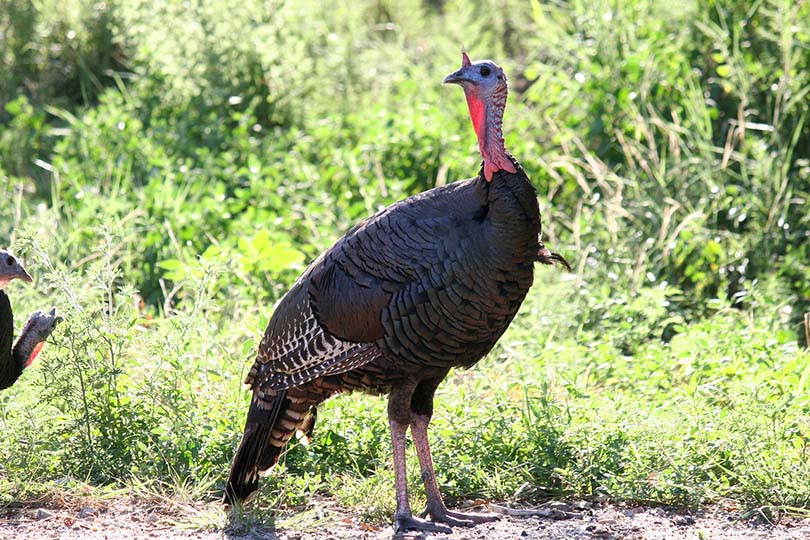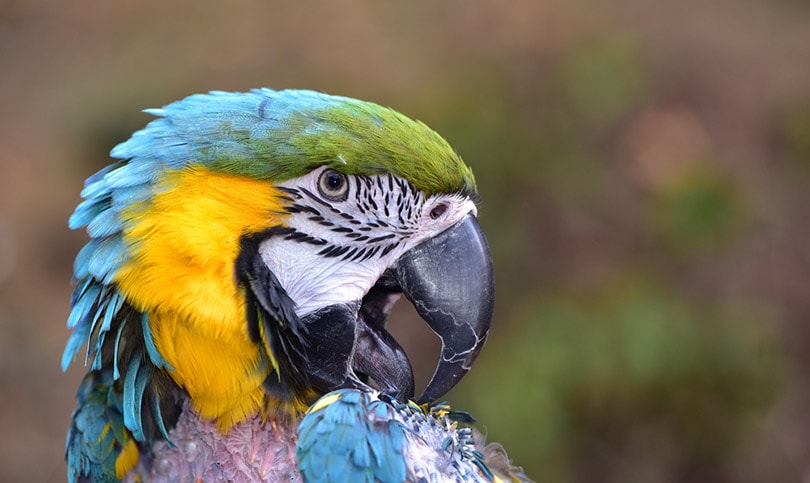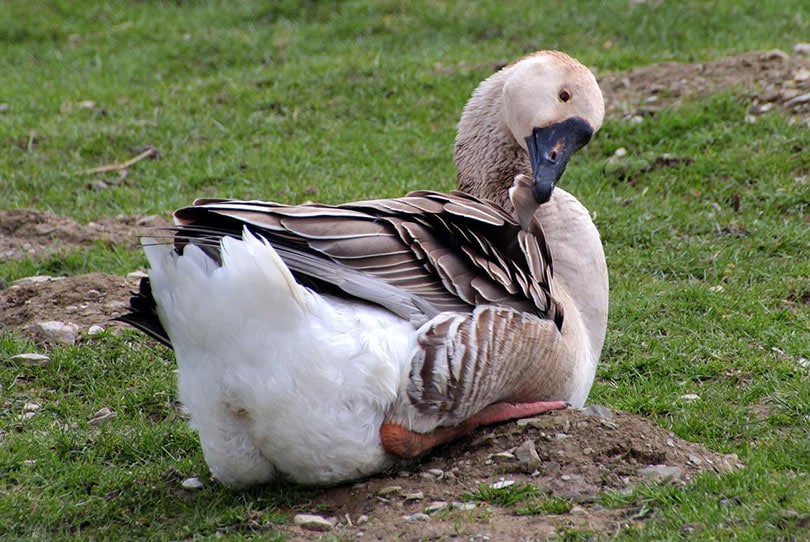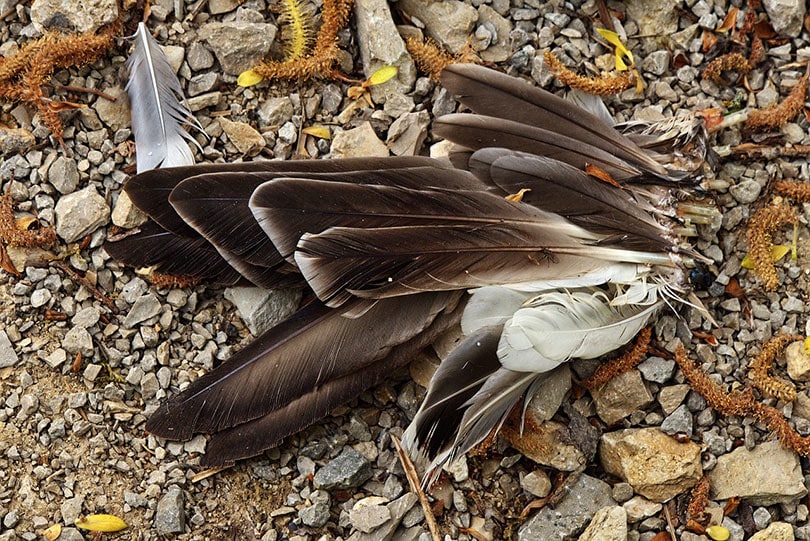Do All Birds Have Feathers? Why Do They Have Them?
Last Updated on

Birds are stunning creatures that come in all shapes and sizes. Many people wonder whether there is such a thing as a featherless bird, so if you would like to know whether all birds have feathers, you came to the right spot.
There’s no such thing as a featherless bird since all birds have some type of feather. While some are entirely covered in feathers, others just have them on certain parts of their bodies. Some birds are born with them, while some develop them throughout life. There are also birds whose feathers resemble hairs, which leads us to believe that featherless birds exist.
In this article, we will talk more about this topic and provide you with a list of birds that might appear featherless at first glance.

Why do birds have feathers?
So, you’re probably wondering why birds have feathers in the first place. Feathers are there to protect and shelter birds, and they have multiple usages. There are several reasons why feathers are so important for birds, including:
1. Appearance
The first reason in regards to why birds have feathers is their appearance. Since birds are prey for many animals, their feathers will often serve as camouflage. Also, some birds attract their nesting partners and communicate with them through the appearance of their feathers.
2. Protection
Feathers also protect birds from wind, sun, and moisture. They keep birds dry during rain and also protect them from direct sunlight. The material of feathers is keratin, which is wear and water-resistant.

3. Staying warm
Birds have warm blood and need to keep their body temperature at around 104°F. Their feathers help birds regulate their body temperature, and birds can adjust their feathers to trap less or more air. Birds will either expose their feet and hands to cool down or tuck them inside the feathers to keep them warm.
4. Flying/Swimming/Diving
Birds also need feathers for flying, while some species need them for swimming and diving. While flying, feathers give birds stability and better control of their movement in the air. Since some birds also swim and dive, their feathers will also help during these activities.

The 7 Types of bird feathers
There are seven different types of bird feathers, each having its function and adjusting to the birds’ habitat and feeding. You can see them below:
Wing feathers
Wing feathers are asymmetric and have a less flexible edge that stops midair twisting. They are specialized for flight and have a windproof surface.

Tail feathers
Tail feathers are very similar to wing feathers. They create a fan-like shape that supports precision when a bird is flying.
Contour feathers
Contour feathers are fluffy feathers that are close to a bird’s body. They help the birds to show off or to appear camouflaged.
Down feathers
Down feathers are short feathers close to the bird’s body, and they trap body heat so that the bird can be warm.
Semiplume
Semiplume feathers are commonly hidden below other feathers and create an insulating structure that keeps birds warm.

Filoplume
Filoplume feathers are rarely visible and have just a few tiny barbs. You can find them around the tip. These feathers are connected with the receptors inside the bird’s skin, and they provide information about air pressure and wind to maintain a stable flight.
Bristle
Bristles are simple, stiff feathers with a rachis, commonly without branches. You can usually find them on the base of the beak and around the bird’s eyes.

5 Examples of birds that might seem featherless
Due to the shape or position of their feathers, some birds can appear as if they do not have feathers in the first place. Of course, that’s not true, as all birds have feathers, but some can trick us into believing they don’t have feathers or have fur instead of feathers.
1. Vultures

Some vulture species do not have feathers on their heads. For example, the Torgo Vulture. That’s because of the adaptation to the type of feeding. This bird type feeds on dead animals, so if they had feathers on their heads, they would constantly be covered in blood during feeding, which could be challenging to clean.
2. Cardiolates bulbuls
Cardiolates bulbuls are birds that have no feathers on their face. They were recently discovered in Asia and are native to Laos.
3. Frigates

Some species of frigates, such as Magnificent Frigatebirds, don’t have feathers in their neck area. Instead, they have a bright-red pouch that inflates during courtship.
4. Turkeys

Another excellent example of a bird without feathers is a turkey. They also do not have feathers on their necks, making them seem featherless. However, a full-grown wild turkey has around 5,000 to 6,000 feathers.
5. Kiwi

Kiwi birds cannot fly, so their wings are naturally not developed. Therefore, their feathers are small and bristle-like. Because of that, people think that kiwi birds have fur instead of feathers. They are loose, brownish, and help kiwi birds camouflage themselves in the dark.

Are birds born with feathers?
Species of birds can be either precocial or altricial, and that determines if the baby bird will have feathers when born or not. Altricial species such as woodpeckers, hawks, and herons don’t have feathers when born, while precocial species like ducks and chickens are born with feathers.
When born, altricial birds need more protection and care from their parents because they cannot prosper independently. The parents need to keep them warm and provide food until they are capable of feeding on their own.
Why can birds lack feathers?
There are other cases where birds can lack feathers due to a disease or a disorder. Most of these conditions are curable, so there’s no need to worry if it happens to your pet bird.
The most common issues that cause birds to lose feathers are:
Feather development abnormalities
Birds can suffer from feather development abnormalities that can occur due to inadequate housing, infections, or even ectoparasites. Fleas, mites, and lice can chew feathers and cause them to fall out. These parasites will also weaken the bird and damage its health, so if your pet bird is dealing with these issues, immediately take it to the vet.

Behavioral disorder
Food allergies, toxins in the birds’ environment, excessive grooming, bacterial infections, stress, and anxiety can also cause birds to lose their feathers. You would be able to cure your pet bird if it suffers from one of these issues, but you have to strictly follow your vet’s advice.
Viral diseases
There are viral diseases that can also affect a bird and make it lose its feathers. The most common diseases that make birds lose their feathers are beak and feather disease and polyoma. These are also curable if you take the bird to the vet.
Altricial offspring
Some species have altricial offsprings that are not completely developed, so they depend on their parents. When they hatch, they commonly don’t have feathers to protect them. The feathers appear as the birds grow, so this is not a significant issue.
Follicular Cyst
Follicular Cysts are a common congenital disease that occurs when a feather grows within the follicle. That’s why birds with this condition can have unopened feathers.

Chrysanthemum disease
Another disease common to birds is the chrysanthemum disease which causes feathers to stop growing. Birds that suffer from it have an issue with regulating their body temperature.
Feather plucking
Some birds can also be without feathers because they pluck them out.
- Dry skin
- Cancer
- Improper, unbalanced diet
- Parasites
- Allergies
- Pyoderma
- Metabolic disorders
- Boredom
- Skin irritations and inflammation
- Fungus

Interesting facts about bird feathers
Bird feathers are unique, and there are a lot of interesting facts about them.
- All birds have feathers, and they are the only animals that have them.
- Since birds’ feathers can suffer from wear and tear, birds grow new feathers each year to replace the old ones. Some birds experience this once a year, while others experience this change twice a year.
- The Emperor Penguin has approximately 80,000 feathers.
- It’s not legal to possess the feathers of an endangered bird without a permit.

Conclusion
So, to sum it up, all birds have feathers, which makes them distinctive from other animals. Each bird is unique and has a different feather shape, position, and color. Many birds can appear featherless, but that’s just a natural optical illusion because birds’ feathers adapt to their environment.
Featured Image Credit: ladymacbeth, Pixabay
About the Author Robert Sparks
Robert’s obsession with all things optical started early in life, when his optician father would bring home prototypes for Robert to play with. Nowadays, Robert is dedicated to helping others find the right optics for their needs. His hobbies include astronomy, astrophysics, and model building. Originally from Newark, NJ, he resides in Santa Fe, New Mexico, where the nighttime skies are filled with glittering stars.
Related Articles:
10 Types of Hummingbirds in Arkansas (With Pictures)
8 Types of Hummingbirds in Nebraska (With Pictures)
5 Types of Hummingbirds in Idaho (With Pictures)
3 Types of Hummingbirds in Mississippi (With Pictures)
8 Types of Hummingbirds in Kansas (With Pictures)
5 Types of Hummingbirds in West Virginia (With Pictures)
5 Types of Hummingbirds in Ohio (With Pictures)
Where Do Nuthatches Nest? Nuthatch Nesting Habits Explained
